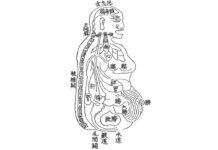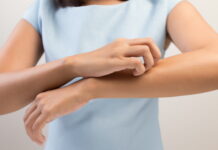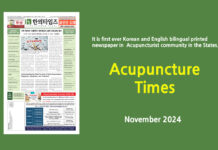
The pterygoid and masseter muscle should be treated by acupuncture treatment for better treatment results of the symptom
By Winston Lee L. Ac, Ph.D, KMD
Without recognition, we are using our jaws every single day, hour, and second, even at this moment when you are reading this article, chewing cookies or popcorn. The common TMJ(Temporomandibular joint dysfunction) symptom is irritating pain and noise in the joint. In a severe case, the patient cannot open up the mouth a little as ½ inch, and it needs urgent treatment to drink water and eat food properly.
What is the reason? As far as my experience and according to other medical statistics, most of TMJ patients are female. If a male patient shows this TMJ symptom, no offense, but he might have a sensitive personality. I think most of the TMJ patients are fragile and vulnerable against mental stress, and actually, they are under substantial mental pressure at the moment.
This joint is hiding a secret tissue, a disk. This tiny disc-shaped cartilage is existing between the mandible and the temporal bone. It doesn’t work when a mouth is opened just up to ½ inch, but it glides forward when it should open up to bite a crispy apple. The head of the mandible moves forward, riding on the disc of TMJ, and this dynamic movement makes the larger opening happen more than 1 inch. The snake’s jaw is famous for its silky and smooth movement, and it can bite a rat or bunny bigger than its head. How amazing!
Most doctors tend to focus on the jaws itself when a patient is struggling to open the jaw and have severe pain. The first choice should be the pterygoid and masseter muscle. It’s not easy to get access to treat these two muscles, but we have acupuncture to reach these muscles. Check the knots or tightness of the muscles with a finger and relieve them at first.
Sometimes it’s working on the spot of jaws, but most cases don’t show more improvement, or it recurs again soon. I have been seeing these TMJ patients so far, and I realize that most of them have straight necks or reverse curves on the C-spine at the same time. I never saw any patient with the TMJ pain, but the curve of the C-spine has a normal C shape. That’s why I always have the patient take X-ray first before treatment. When the straight neck is confirmed, I target the spasms of capitis, splenius, and trapezius muscle. Because a straight neck inevitably needs sufficient force to pull it back and hold it not to fall ahead. At the same time, we need to look at the anterior area of the neck. SCM(Sternocleidomastoid) muscle starts from the sternum and ends at the mastoid process of the skull. Its muscle fiber is extended and injured because the head moved forward. To protect from a further muscle injury, the tightness around the belly of the SCM muscle becomes significant not to be overextended.
As mentioned above, the spasms of splenius capitis muscle and tightness of SCM muscle become the origin of the pain on the head, neck, and shoulder. Fortunately, we have a unique method to treat this problem- Acupuncture. When we target these disorders of muscle and remove the spasms and tightness precisely with acupuncture, the function of the muscle will be restored effectively. After seeing the progress on muscle issues, I usually recommend the patient to see a chiropractor adjust the straight neck, so-called turtle neck. At the same time, I encourage the patient to put the chin backward and broaden the chest to maintain the normal posture.
Last but not least, I check the patient’s sleeping posture. Some patients are sleeping on their side out of habit. When the patient is sleeping on either side, it might be one of the reasons it recurs easily later because the mandible falls from the aligned position due to gravity. Believe it or not, we don’t bite firmly while we are sleeping. The mouth is open slightly, and it’s not entirely closed as you expect. So, I always ask my patient to sleep on their back when sleeping.































